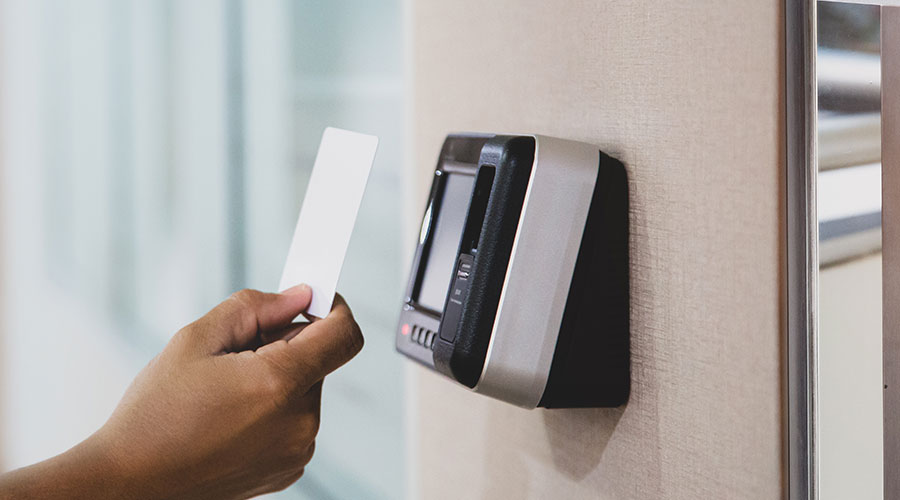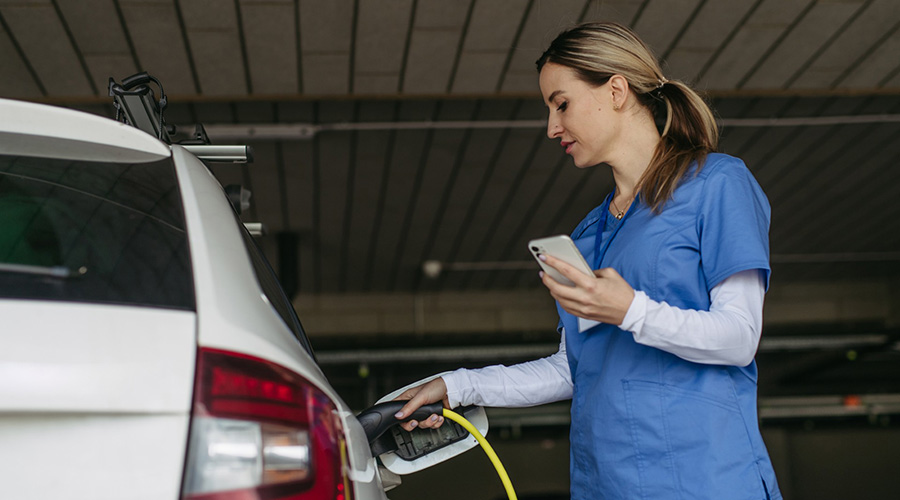When looking after people’s loved ones, one takes extra care to ensure they are safe and protected. When those loved ones are elders requiring specialized care, ensuring they feel safe without making security overbearing is a key consideration. Add in the changing demands caused by lessons from a global pandemic and you have a unique set of challenges.
This was the situation facing Parker at its Somerset location, a 120-bed post-acute rehabilitation and skilled-nursing home. Its elders have a variety of needs—from long-term care to short-term post-illness rehabilitation. As a result, they need a flexible solution combining simple, intuitive access control for some and secure wander management for others.
Delivering a unified approach to person-centered care
Today, every care home will use multiple systems to control access and security. This can lead to a preoccupation with the many individual components involved. But, to deliver real value, the prime focus needs to be less on the systems themselves and more on the people those systems serve and how everything works together in day-to-day use.
For Parker, it was important that the access solution they put in place would integrate easily with their intercom and video monitoring solutions. This would offer them the ability to easily manage everything from a single console. It would enable their team to streamline access control and focus on delivering the care elders deserve.
The answer was to specify SARGENT’s Wi-Fi-enabled locks. Because these use common networking standards, they are easier to integrate and lower the cost of implementation. They are also simpler to manage and configure, freeing time for more important activities.
Getting the right people involved early
All too often, access control hardware and infrastructure can be viewed as an afterthought in designing and updating properties. This can result in unforeseen issues that must be corrected or worked around at a later date. Not ideal.
The experienced team behind the Parker project understands this well. They made sure to involve a cross-disciplinary group from the outset. This saw Steve Leone of Spiezle Architect Group, Inc., and security consultant John Dalton of IT Initiatives working closely with Parker’s leadership and operations team to think through the experience they wanted to deliver for staff, elders, and visitors.
Andy Ruderman, Architectural Consultant with ASSA ABLOY then showed how Parker’s vision could be translated into hardware that could integrate into the wider solution.
Dealing with the unexpected
The project was already in the advanced planning stages when Covid-19 changed the rules. In short order, priorities evolved.
Elders are typically at greater risk from a number of illnesses. So, ensuring they can be protected from infection is a core focus for any care home. In a normal year, of course, the potential for widespread infection is relatively low. But what about years that are anything but normal?
The Covid-19 pandemic led the Parker team and their partners to rapidly reevaluate their needs and approach. They needed to be able to quarantine specific areas to isolate infected elders. They needed to be able to minimize staff movement across more of the home than necessary. And they needed to create the ability to securely access areas with the minimum of physical interaction.
The result was a solution built around the real world of how the home would be used on a daily basis. It also paid dividends when Covid-19 became a key consideration.
To solve this, they worked with Andy Ruderman and the team at SARGENT to create a new touchless hardware solution.
They were able to do this because of the close integration between the in-house development specialists and manufacturing team. It meant they could take existing products and quickly adapt them to Parker’s evolving needs—bringing a touchless paddle design usually used in hospital settings and rewriting the hardware already in use within the home. This delivered a solution that enabled true touchless access to key areas for authorized personnel.
They extended the solution to enable secure medicine cabinets to be placed closer to residents, minimizing the need for staff to move more than necessary, limiting physical interaction.
Ultimately, it’s a solution that gives Parker the ability to deal with the current pandemic and the flexibility to deal with possible future challenges.

 EV Charging Station Design: Ensuring Patient Access
EV Charging Station Design: Ensuring Patient Access Sanford Health and Prairie Lakes Healthcare System Merge
Sanford Health and Prairie Lakes Healthcare System Merge Sedgebrook Falls Victim to Data Incident
Sedgebrook Falls Victim to Data Incident How Efficiency Checklists Help Hospitals Save Energy, Water and Money
How Efficiency Checklists Help Hospitals Save Energy, Water and Money Designing with Heart: Seen Health Center Blends Cultural Warmth and Clinical Care
Designing with Heart: Seen Health Center Blends Cultural Warmth and Clinical Care